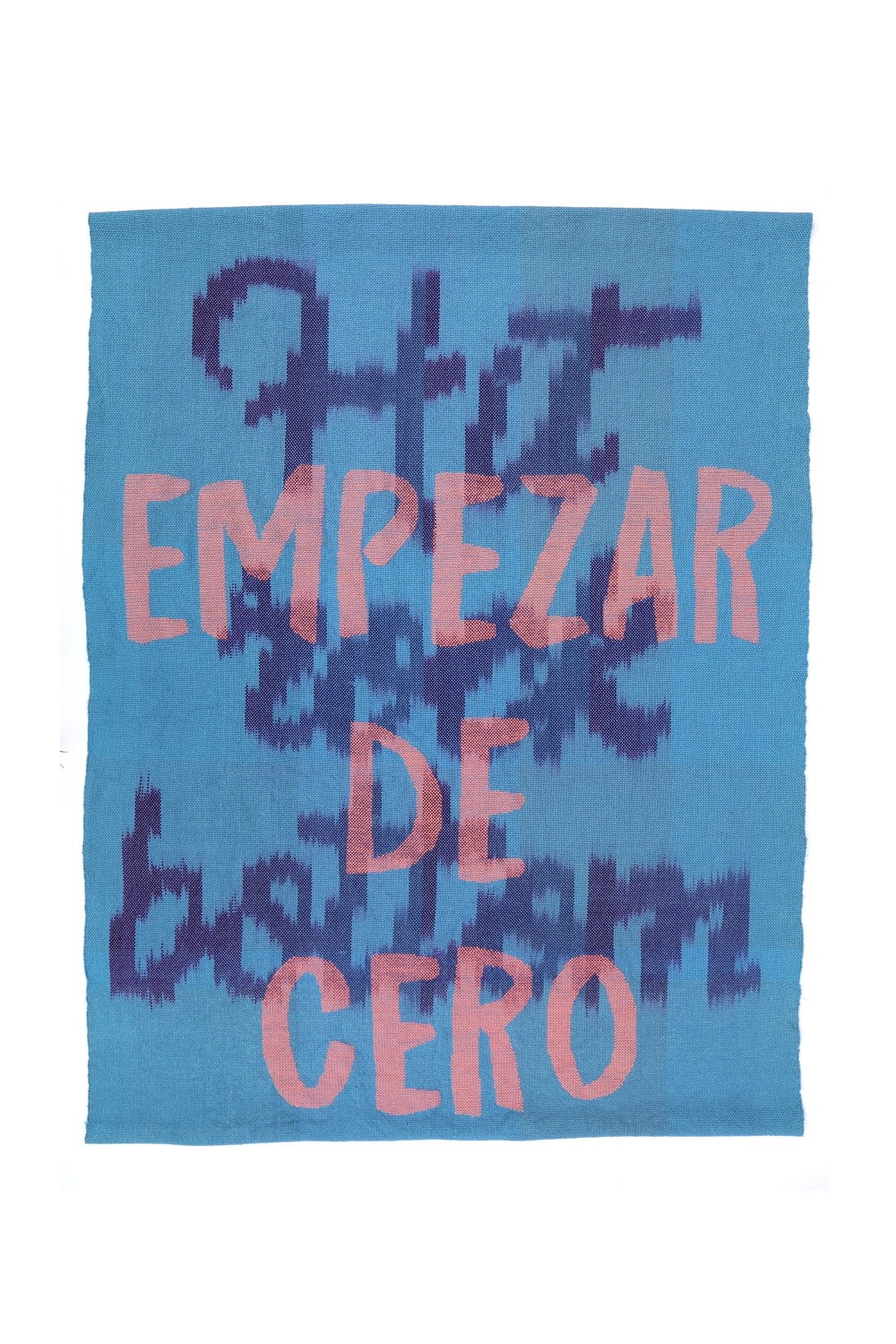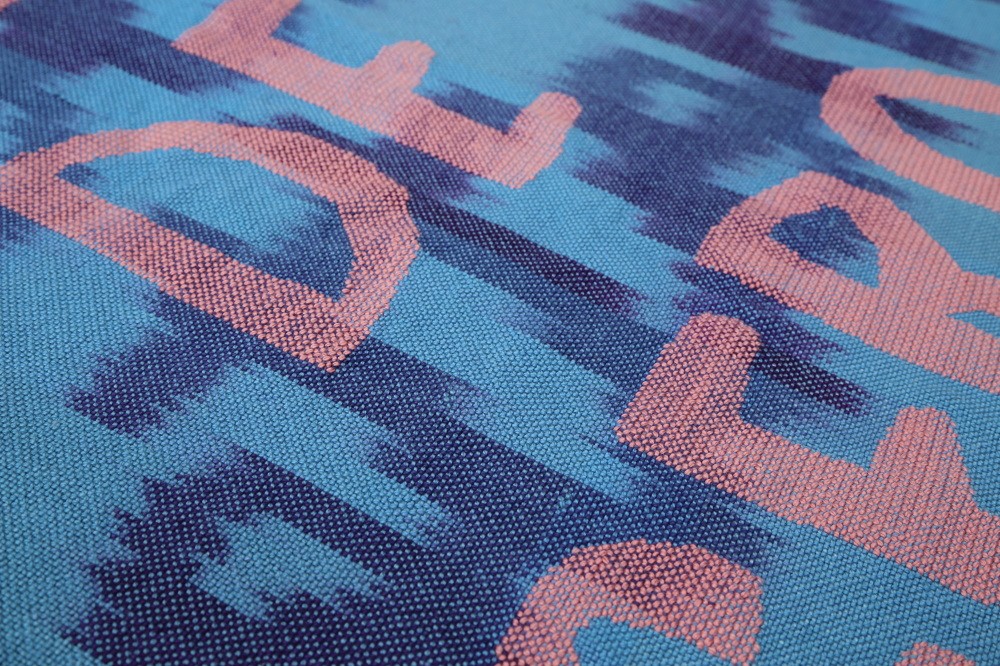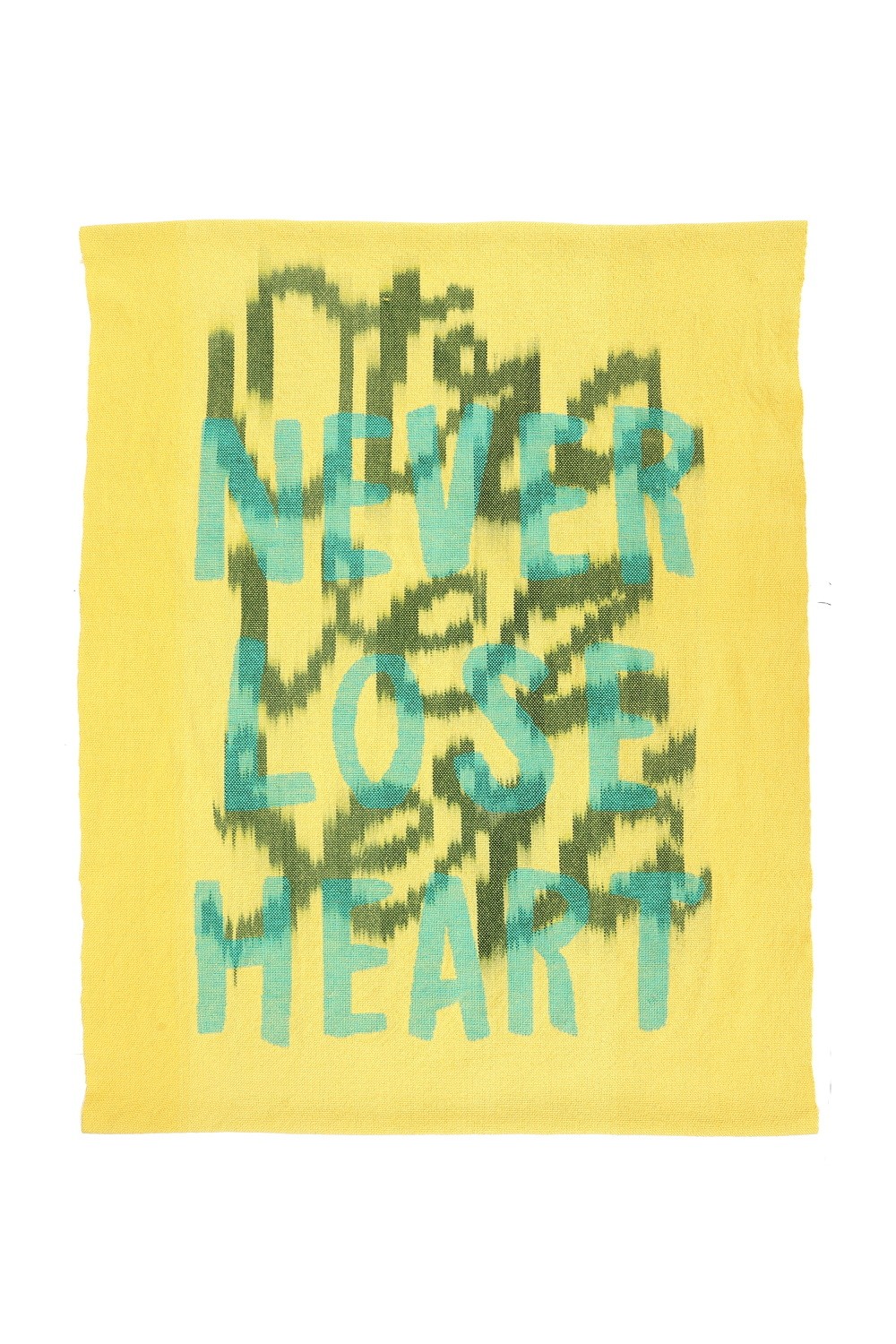Creative human being with a passion for soft materials
Weaving
Untitled bilingual project
2017 - 2018
The terms "text" and "textile" have the same Latin root, "texere," which means to weave or braid. Just as the threads of a fabric make up the warp and weft, words and their meanings, authors and readers, and the space and time in which both exist are interwoven in various ways. The series I discuss below is the culmination of a group of works in which I explored the construction of bilingual texts in Spanish and English through techniques associated with the process of manual weaving.Technically, each of these tapestries is made using the same process: the warp threads were hand-dyed after being measured and placed lengthwise, then transferred to a manual loom to be woven, interlacing with another thread of the same color and without dye. The process is completed with manual embroidery in a contrasting tone. The combination of the three colors, the original color of the weft and warp threads, the dye, and the embroidery thread, creates a series of spaces in which the color blend occurs visually, giving rise to new tones that exist only in the eye of the beholder."Hit rock bottom / Empezar de cero" , "Con las ganas / Go for it", "Better watch out / Nada que perder", and "Otra vez sera / Never lose heart" make up a series of tapestries in which I explore my experience as a Spanish speaker during my three-year stay in the United States. The language we speak - listen to, read, write - shapes our way of thinking, of expressing who we are, of being perceived by others. And through it, the culture that surrounds it influences our way of seeing life, the decisions we make, and the consequences of those decisions.The texts represented in the work present opposing attitudes toward the same situation. "Hit rock bottom" contrasts with "Starting from scratch," which sees an opportunity in the crisis; "Go for it" opposes "With the desire," which is less brave and energetic; "Better watch out" indicates a state of vigilance and prudence, contrary to "Nothing to lose," which invites us to plunge into the unknown; and finally, "Never lose heart" asks us not to lose heart in a more hopeful way than the conformist "It'll happen again." The embroidery on the dyed areas creates spaces in which both languages combine, and these spaces are not only a metaphor for the places where the experiences of people living between two cultures occur but also realities in which both points of view coexist and are possible. Between the most positive and the most negative attitude, there is always a plethora of grays in which we can take refuge to face the vicissitudes of life.
Translation of the text published in Spanish at the Papeles de Cultural Contemporánea nº25 academic magazine (2023)







